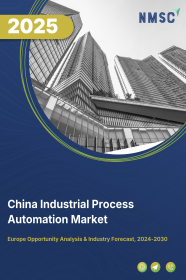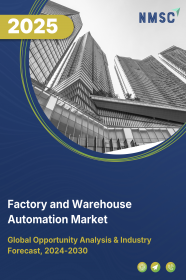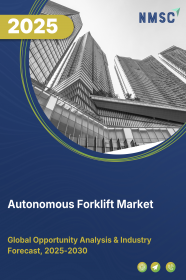
China Industrial Process Automation Market by Component (MES [Hardware, Software, Services]; DCS [Hardware, Software, Services]; PLC [Hardware, Software, Services]; SCADA [Hardware, Software, Services]; Field Instruments; Industrial Robots; Human Machine Interface; Industrial PCs; Process Analyzers & Drives) and by End User (Oil & Gas, Chemicals & Refining, Energy & Power, Pulp & Paper, Metals & Mining, Pharma, & Others) – Global Opportunity Analysis and Industry Forecast, 2025–2030
Industry: Semiconductor & Electronics | Publish Date: 17-Oct-2025 | No of Pages: 159 | No. of Tables: 121 | No. of Figures: 66 | Format: PDF | Report Code : SE1003
Industry Outlook
The China Industrial Process Automation Market size was valued at USD 11.61 billion in 2024 and is projected to grow to USD 12.76 billion by 2025. Additionally, the industry is expected to continue its growth trajectory, reaching USD 18.10 billion by 2030, with a CAGR of 7.67% from 2025 to 2030.
China industrial process automation market is expanding rapidly, driven by the growth of the oil and chemical industries. Rising oil production has intensified the need for automation to optimize large-scale extraction and refining operations while ensuring safety and efficiency in high-risk environments. Similarly, the chemical sector is increasingly adopting automation to improve precision, regulatory compliance, and productivity in complex manufacturing processes. Together, these industries highlight the critical role of advanced technologies in supporting large-scale, efficient, and competitive industrial operations.
However, integration challenges with legacy systems remain a key restraint, as businesses face technical and financial hurdles in aligning new automation technologies with existing infrastructure, particularly smaller firms. Looking ahead, the adoption of artificial intelligence (AI) and machine learning (ML) presents a significant opportunity, enabling predictive maintenance, real-time decision-making, and process optimization that drives innovation, productivity, and China’s global leadership in industrial automation.
Green Transition and Carbon Neutrality Goals Accelerate Automation Adoption
China’s ambitious objective to reach carbon neutrality by 2060 is promoting widespread integration of advanced process automation systems. Distributed Control Systems (DCS), PLCs, and SCADA platforms are being deployed across heavy industries and power generation sectors to enhance real-time monitoring, boost productivity, and reduce energy consumption and emissions—creating a powerful catalyst for automation investment.
Financial Incentives and Support for Advanced Manufacturing Spur Automation Growth
In a recent push to upgrade its industrial base, China’s central government and financial institutions have introduced new financing frameworks and “green channels” aimed at supporting industrial software, automation technologies, and intelligent production systems. This enhanced access to medium- and longterm financing, especially for high-tech and green manufacturing, is lowering entry barriers and energizing adoption of automation across numerous sectors.
Shortage of Highly Skilled Technical Talent Limits Automation Deployment
Despite significant investments in automation infrastructure, China’s industrial process automation market faces a growing talent gap, particularly in areas such as advanced robotics programming, industrial AI integration, and system cybersecurity. While automation technologies are rapidly evolving, the availability of a qualified workforce with expertise in both operational technology (OT) and information technology (IT) remains limited.
This shortage is especially evident in inland manufacturing hubs and small-to-medium enterprises, where access to technical training and automation specialists is often lacking. As a result, companies may struggle to fully utilize modern systems or delay implementation altogether due to the complexity of managing and maintaining automated environments. Bridging this skill gap is essential to sustain longterm growth and competitiveness in China’s industrial automation landscape.
Rise of Industrial AI And Edge Computing Drives Next-gen Automation
China’s rapid progress in artificial intelligence and edge computing is creating new frontiers for industrial process automation. By integrating AI algorithms directly into industrial control systems and deploying edge computing devices at the factory level, Chinese manufacturers are beginning to unlock real-time, autonomous decision-making capabilities. These technologies significantly reduce latency, enhance system responsiveness, and enable localized data processing, which is essential for managing complex production environments.
The convergence of AI and edge automation is particularly transformative for sectors such as electronics, energy, and smart manufacturing, where operational agility and predictive capabilities are becoming competitive necessities. As China continues to lead in semiconductor production and AI development, this technological synergy is expected to fuel a new wave of intelligent, decentralized, and self-optimizing industrial automation solutions—positioning the country at the forefront of future-ready manufacturing
Competitive Landscape
The promising players operating in the market are Siemens AG, ABB Ltd., Schneider Electric SE, Emerson Electric Co., Honeywell International Inc., Yokogawa Electric Corporation, Rockwell Automation, Inc., Endress+Hauser AG, Omron Corporation, Mitsubishi Electric Corporation, Inovance Technology Co., Ltd., Keyence Corporation, FANUC Corporation, Yaskawa Electric Corporation, and UT Technology and others.
China Industrial Process Automation Market Key Segments
By Component
-
Manufacturing Execution Systems
-
Hardware
-
Software
-
Services
-
-
Distributed Control Systems
-
Hardware
-
Software
-
Services
-
-
Programmable Logic Control
-
Hardware
-
Software
-
Services
-
-
Supervisory Control and Data Acquisition (SCADA)
-
Hardware
-
Software
-
Services
-
-
Field Instruments
-
Industrial Robots
-
Human Machine Interface
-
Industrial PCS
-
Process Analyzers & Drives
By End-User
-
Oil & Gas
-
Chemical & Refining
-
Energy & Power
-
Pulp & Paper
-
Metals & Mining
-
Pharma
-
Cement & Glass
-
Others
Key Players
-
Siemens AG
-
ABB Ltd.
-
Schneider Electric SE
-
Yokogawa Electric Corporation
-
Rockwell Automation, Inc.
-
Endress+Hauser AG
-
Omron Corporation
-
Mitsubishi Electric Corporation
-
Inovance Technology Co., Ltd.
-
Keyence Corporation
-
FANUC Corporation
-
Yaskawa Electric Corporation
-
UT Technology
Report Scope and Segmentation
|
Parameters |
Details |
|
Market Size Value in 2025 |
USD 12.76 billion |
|
Revenue Forecast in 2030 |
USD 18.10 billion |
|
Value Growth Rate |
CAGR of 7.67%from 2025 to 2030 |
|
Analysis Period |
2024–2030 |
|
Base Year Considered |
2024 |
|
Forecast Period |
2025–2030 |
|
Market Size Estimation |
Billion (USD) |
|
Growth Factors |
|
|
Companies Profiled |
15 |
|
Market Share |
Available for 10 companies |
|
Customization Scope |
Free customization (equivalent to up to 80 working hours of analysts) after purchase. Addition or alteration to country, regional, and segment scope. |
|
Pricing and Purchase Options |
Avail customized purchase options to meet your exact research needs. |

















 Speak to Our Analyst
Speak to Our Analyst
























